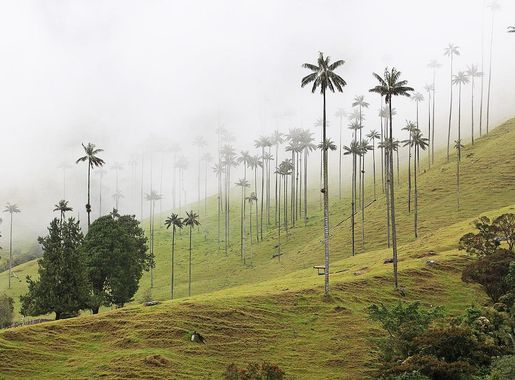
Cocora Valley: Colombia's Cloud-Kissed Paradise
Discover Cocora Valley, Colombia's stunning natural wonder, home to the world's tallest wax palm trees, diverse wildlife, and rich cultural heritage in the heart of the Andes.
Nestled in the heart of the Colombian Andes, Cocora Valley is a breathtaking gem that offers a unique blend of natural beauty and cultural richness. The valley is renowned for its towering wax palm trees, which are the tallest palm trees in the world, reaching heights of up to 60 meters. As you wander through the lush green landscape, you'll be surrounded by these majestic giants, creating a scene that feels almost otherworldly. Cocora Valley is part of the Los Nevados National Natural Park, a protected area that boasts diverse flora and fauna. Birdwatchers will be delighted to spot rare species such as the Andean condor and the yellow-eared parrot. The valley's trails are perfect for hiking, offering various routes that cater to different fitness levels. Whether you're an experienced trekker or a casual walker, you'll find a path that lets you soak in the valley's serene beauty. The nearby town of Salento serves as the gateway to Cocora Valley and is worth a visit in its own right. This charming town is famous for its colorful colonial architecture and vibrant coffee culture. Take some time to explore its quaint streets, enjoy a cup of freshly brewed Colombian coffee, and learn about the region's coffee-making traditions. Together, Cocora Valley and Salento offer a perfect blend of nature, adventure, and culture, making it an unforgettable destination.
Local tips in Cocora Valley
- Bring sturdy hiking boots as trails can be muddy, especially after rain.
- Start your hike early in the morning to avoid crowds and enjoy cooler temperatures.
- Pack a raincoat or poncho; weather in the Andes can be unpredictable.
- Don't forget sunscreen and a hat, as the sun can be intense even at high altitudes.
- Consider hiring a local guide to learn more about the valley's flora, fauna, and history.
- Visit a traditional coffee farm in Salento to complete your experience.
Cocora Valley: Colombia's Cloud-Kissed Paradise
Nestled in the heart of the Colombian Andes, Cocora Valley is a breathtaking gem that offers a unique blend of natural beauty and cultural richness. The valley is renowned for its towering wax palm trees, which are the tallest palm trees in the world, reaching heights of up to 60 meters. As you wander through the lush green landscape, you'll be surrounded by these majestic giants, creating a scene that feels almost otherworldly. Cocora Valley is part of the Los Nevados National Natural Park, a protected area that boasts diverse flora and fauna. Birdwatchers will be delighted to spot rare species such as the Andean condor and the yellow-eared parrot. The valley's trails are perfect for hiking, offering various routes that cater to different fitness levels. Whether you're an experienced trekker or a casual walker, you'll find a path that lets you soak in the valley's serene beauty. The nearby town of Salento serves as the gateway to Cocora Valley and is worth a visit in its own right. This charming town is famous for its colorful colonial architecture and vibrant coffee culture. Take some time to explore its quaint streets, enjoy a cup of freshly brewed Colombian coffee, and learn about the region's coffee-making traditions. Together, Cocora Valley and Salento offer a perfect blend of nature, adventure, and culture, making it an unforgettable destination.
When is the best time to go to Cocora Valley?
Iconic landmarks you can’t miss
Parque Nacional Natural Tayrona
Explore the breathtaking natural beauty and cultural heritage of Parque Nacional Natural Tayrona, a national park in Colombia's Caribbean region.
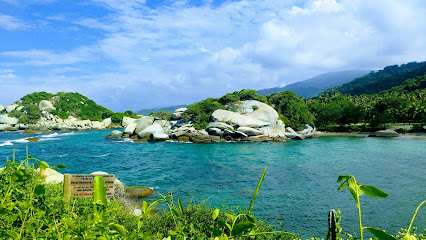
Valle de Cocora
Explore the enchanting Valle de Cocora, home to Colombia's iconic wax palm trees and breathtaking hiking trails, perfect for nature lovers and adventure seekers.

Salento viewpoint
Experience breathtaking views of Cocora Valley from Salento Viewpoint, a serene observation deck surrounded by Colombia's stunning nature.
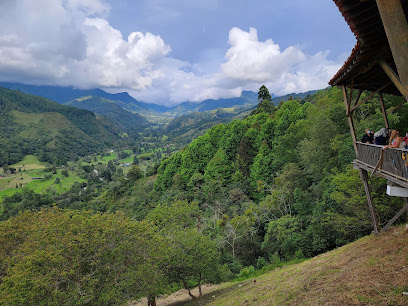
Forest of the Palms
Explore the stunning Forest of the Palms in Salento, Quindio, home to Colombia's iconic wax palms and breathtaking landscapes.
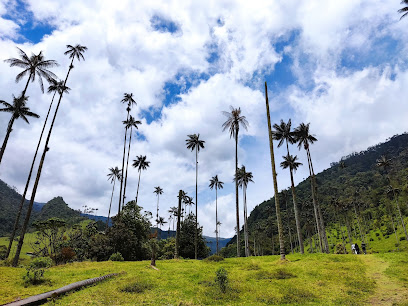
Los Nevados National Park
Discover the breathtaking landscapes and diverse ecosystems of Los Nevados National Park, a true natural wonder in Colombia's Andes.
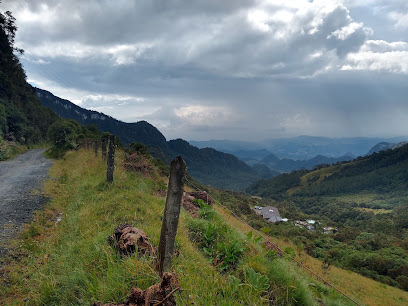
Plaza de Bolívar Salento
Experience the vibrant heart of Salento at Plaza de Bolívar, a cultural gem surrounded by stunning architecture and lush landscapes.
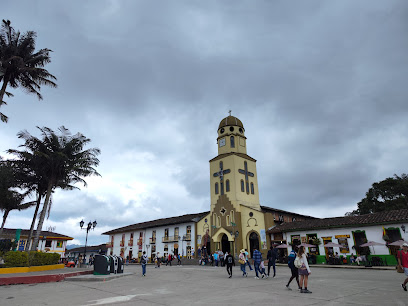
Cocora Valley Trail
Explore the breathtaking landscapes of Cocora Valley Trail in Salento, Colombia, where towering wax palms and stunning views await every adventurer.
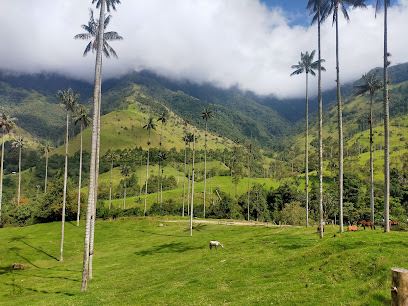
Parque Nacional Natural Serranía de La Macarena
Explore the vibrant ecosystems and stunning landscapes of Parque Nacional Natural Serranía de La Macarena, Colombia's hidden gem for nature lovers and adventure seekers.
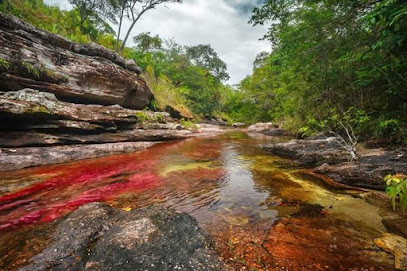
Calle Real
Discover the vibrant culture and artisan charm of Calle Real in Salento, Colombia, a must-visit destination for every tourist.
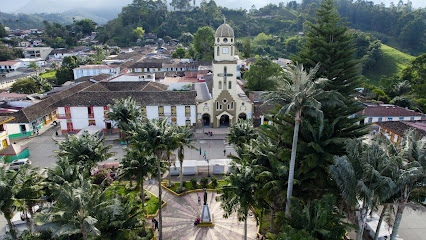
Viajero Hostel Salento
Discover the beauty of Salento and enjoy a vibrant, social atmosphere at Viajero Hostel, your perfect base for exploring Colombia's stunning coffee region.
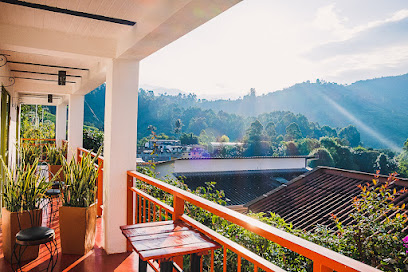
El Mirador del Cocora
Discover the enchanting El Mirador del Cocora, a tranquil hotel in the heart of the stunning Cocora Valley, offering breathtaking views and adventure in nature.

Coffee Tour Luger
Discover the rich heritage of Colombian coffee at Coffee Tour Luger in Salento, where every sip tells a story of tradition and passion.
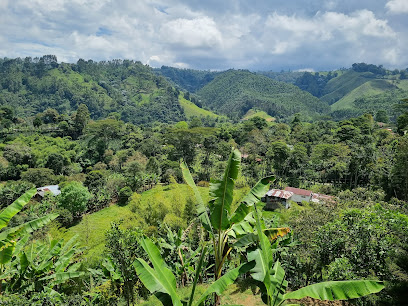
Finca De Don Elias
Discover the exquisite world of Colombian coffee at Finca De Don Elias in Salento, where lush landscapes and rich flavors await.
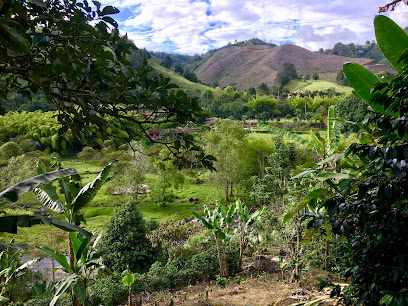
Alto de la Cruz viewpoint
Experience the stunning vistas and serene atmosphere at Alto de la Cruz viewpoint in Salento, Quindío, a must-visit for nature enthusiasts.
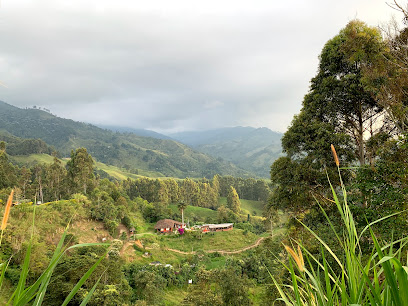
Donde Juan B Bosques de Cocora Valle De cocora
Experience the flavors of Colombia at Donde Juan B Bosques de Cocora, where exquisite cuisine meets breathtaking views in Valle de Cocora.
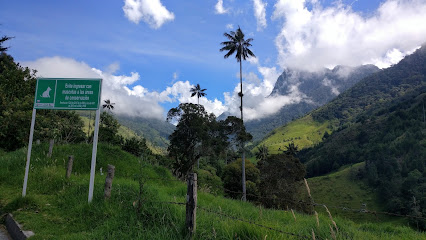
Unmissable attractions to see
Chipre Tower
Discover the stunning views of Chipre Tower in Manizales, Colombia, an iconic observation deck surrounded by breathtaking landscapes.
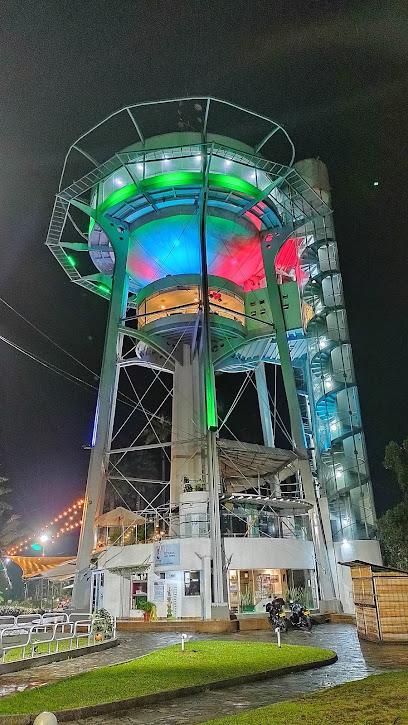
Alto del Nudo
Discover Alto del Nudo, the ultimate observation deck in Pereira, Colombia, showcasing breathtaking views of the Andes and lush coffee landscapes.
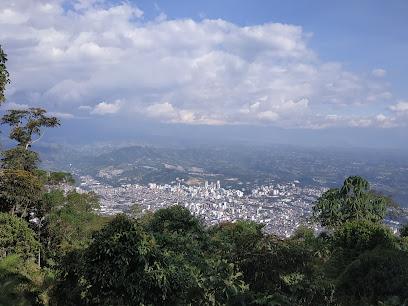
Lake Otún
Experience the tranquility of Lake Otún, a hidden natural paradise in Risaralda, Colombia, perfect for relaxation, hiking, and birdwatching.
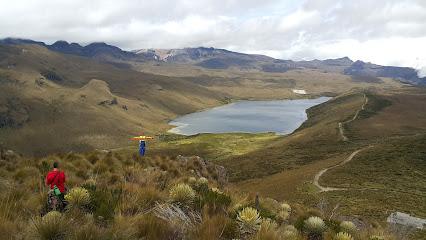
Bosque De Niebla
Explore the breathtaking beauty of Bosque De Niebla, a magical national forest in Salento, Quindio, rich in biodiversity and stunning landscapes.

Serranía del nudo
Explore the breathtaking landscapes and rich biodiversity of Serranía del Nudo in Dosquebradas, a must-visit natural paradise in Colombia.
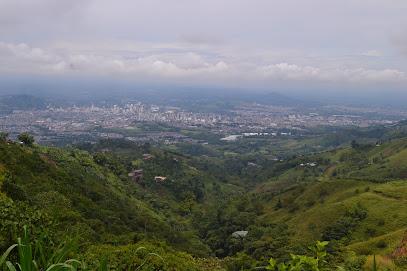
Mei's Cascada
Explore the breathtaking natural beauty of Mei's Cascada in Salento, Quindio, a perfect destination for nature lovers and adventure seekers.
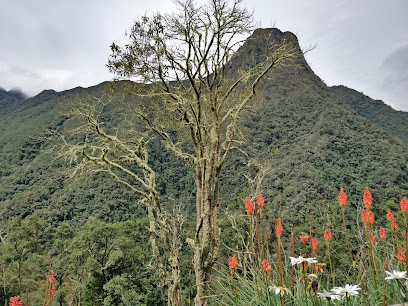
Reserva Natural La PataSola
Explore the breathtaking landscapes of Reserva Natural La PataSola in Salento, Quindio—a paradise for nature lovers and eco-tourists.

Ecoparque Mirador Salento
Discover the serene beauty of Ecoparque Mirador Salento, where lush landscapes meet vibrant wildlife in a peaceful eco-friendly paradise.
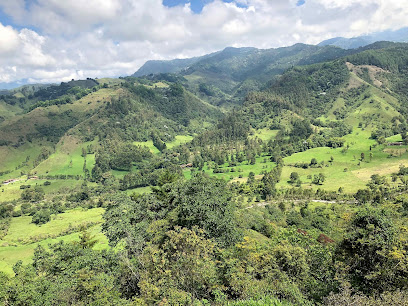
Casa de los Colibríes del Valle de Cocora
Experience the vibrant world of hummingbirds at Casa de los Colibríes del Valle de Cocora, a serene bird watching paradise in Salento, Quindio.

Sendero hasta el río Cárdenas, valle de Cocorá
Explore the stunning Sendero hasta el Río Cárdenas in Valle de Cocorá, a hiking paradise with breathtaking views and rich biodiversity.
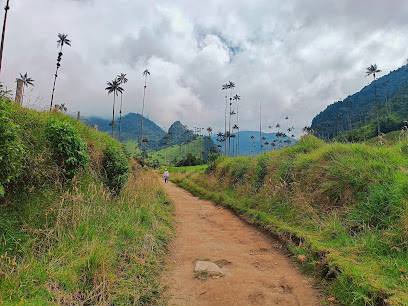
Parador Fotografico - La Vida Bella
Experience the breathtaking views at Parador Fotografico - La Vida Bella, a must-visit destination in Salento, Quindio, Colombia for all nature lovers.
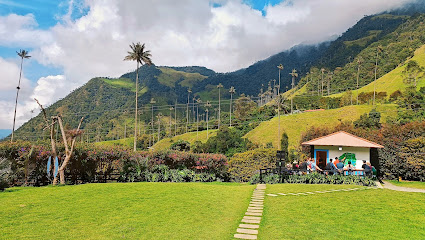
La vida es bella
Discover the breathtaking beauty and rich culture of Salento at La Vida Es Bella, a premier tourist attraction in Colombia's coffee region.
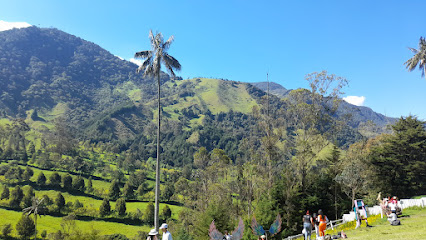
Sendero Recorrido Ecológico El Portón
Explore the enchanting Sendero Recorrido Ecológico El Portón, where breathtaking landscapes and diverse wildlife await your discovery in the heart of Quindío.
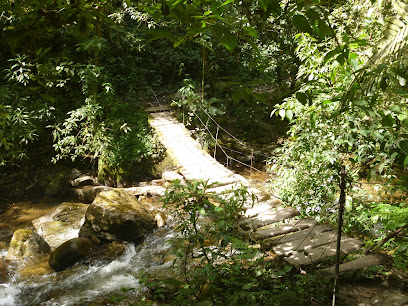
Rio Quindio
Explore the breathtaking landscapes of Rio Quindio, where towering wax palms meet rich biodiversity in Colombia's stunning Quindio region.
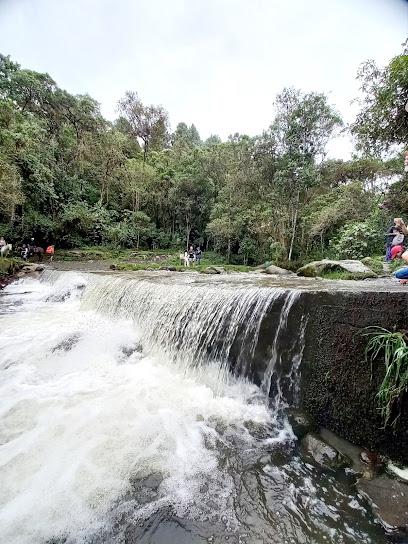
Mirador Águila real
Discover the breathtaking views and serene glamping experience at Mirador Águila Real, a must-visit tourist attraction in Salento, Quindio, Colombia.
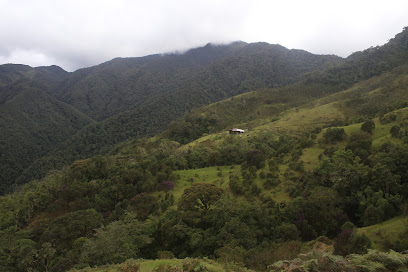
Essential places to dine
Donde laurita en SALENTO
Savor authentic Colombian flavors at Donde Laurita in Salento—where every dish tells a story.
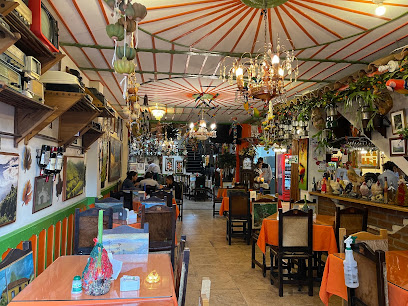
Brunch de Salento
Discover Brunch de Salento - where local flavors meet cozy charm in the heart of Colombia's coffee region.
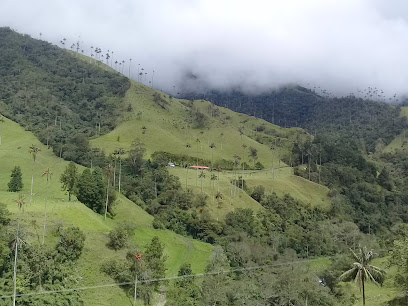
Restaurante Donde Laurita Campestre
Experience authentic Colombian cuisine at Restaurante Donde Laurita Campestre in Salento—perfectly nestled near the breathtaking Cocora Valley.
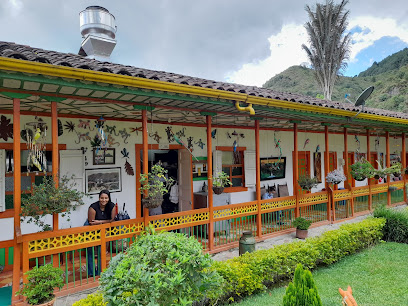
Cumana Bistro Food
Discover authentic Venezuelan cuisine at Cumana Bistro Food in Salento – where every meal is a celebration of flavor and tradition.
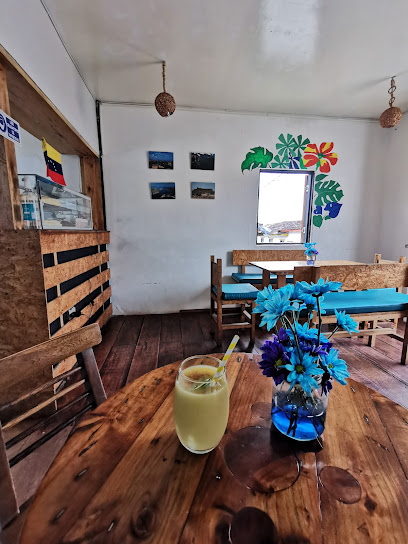
Quindu Restaurante
Experience authentic Colombian cuisine at Quindu Restaurante in Salento – where tradition meets flavor in a charming setting.
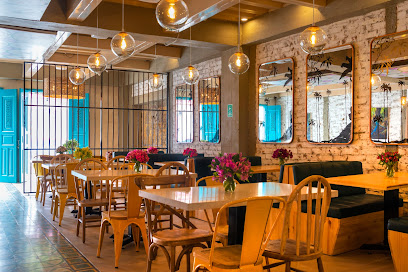
Donde Juan B Bosques de Cocora Valle De cocora
Discover exquisite Colombian cuisine at Donde Juan B in Valle de Cocora—where every meal is a celebration of local flavors amidst stunning natural beauty.
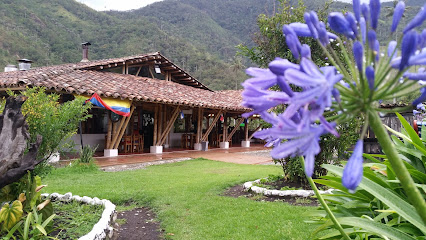
Etnia Arte & Sabor
Discover Etnia Arte & Sabor in Salento: Where authentic Colombian flavors meet artistic ambiance for an unforgettable dining experience.
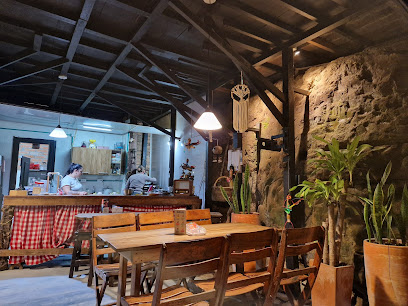
Balcones Del Ayer
Discover Balcones Del Ayer: Your cozy retreat in Salento with exquisite dining and stunning mountain views.

Casa Willys
Experience authentic Colombian cuisine at Casa Willys in Salento – where every dish tells a story and every sip delights.
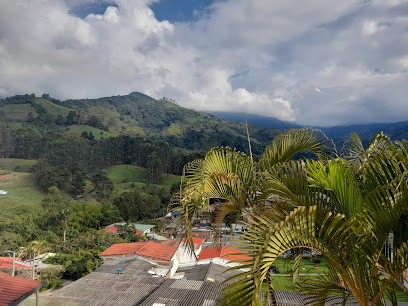
La Fonda de los Arrieros
Discover authentic Colombian cuisine at La Fonda de los Arrieros in Salento – where every meal tells a story.
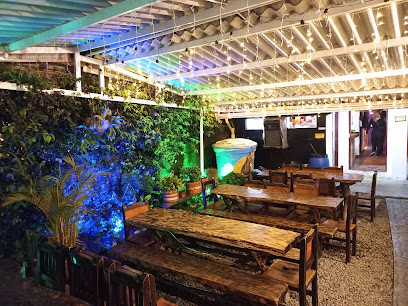
Arepa Fusion Food
Discover the vibrant flavors of Colombia at Arepa Fusion Food in Salento, where traditional arepas meet modern culinary creativity.
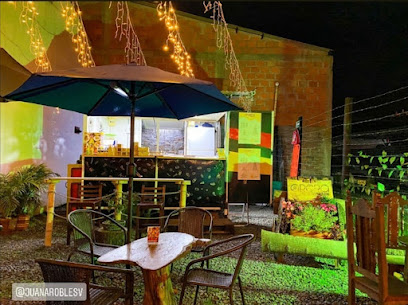
Coco Bowl
Discover Coco Bowl in Salento - A vibrant vegan restaurant offering fresh dishes that celebrate Colombian flavors amidst stunning natural beauty.
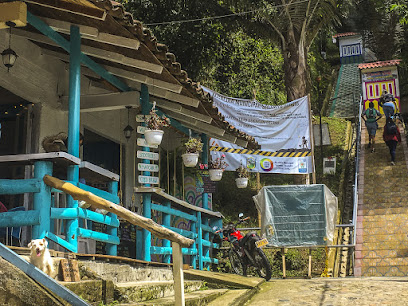
Bumi Cocina Natural - Yerbateria
Discover organic delights at Bumi Cocina Natural in Salento - your go-to destination for health-focused dining amidst stunning Colombian landscapes.
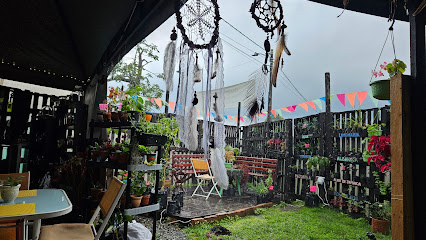
Maji By Cerón
Experience innovative Colombian cuisine at Maji By Cerón, where tradition meets modern gastronomy in the heart of Salento.
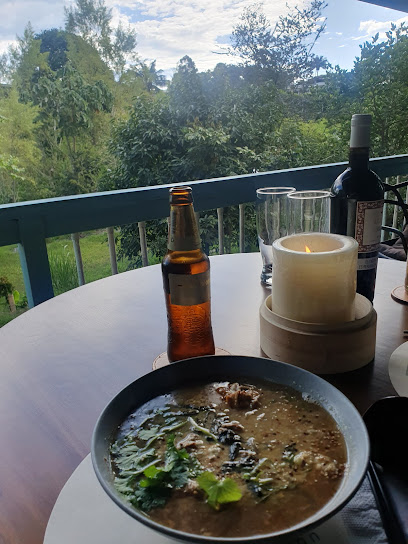
La Casona
Discover authentic Colombian flavors at La Casona in Salento—where every meal is a celebration of local ingredients and culinary tradition.
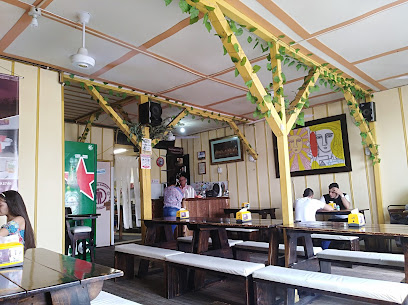
Markets, malls and hidden boutiques
Cocora Valley
Discover the breathtaking landscapes and rich biodiversity of Cocora Valley, a national park in Colombia that offers unforgettable hiking and nature experiences.
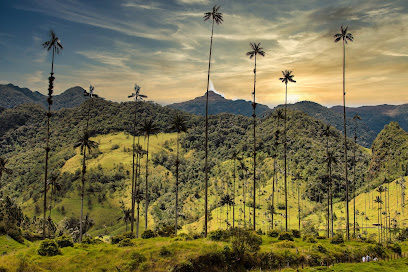
Valle de Cocora
Explore Valle de Cocora: Colombia's breathtaking national park famous for its towering wax palms and stunning natural beauty, perfect for hiking and nature adventures.
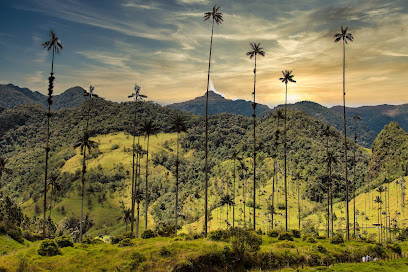
Salento viewpoint
Discover breathtaking views at Salento Viewpoint, an iconic observation deck in Colombia's stunning Coffee Region.
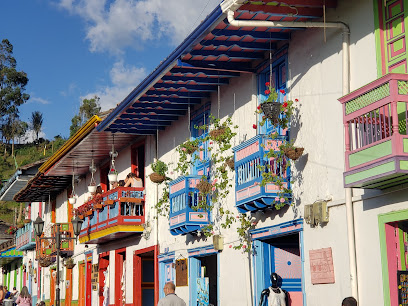
Forest of the Palms
Explore the breathtaking Forest of the Palms in Salento, Quindio, home to iconic wax palms and stunning natural beauty, perfect for nature lovers and adventurers.

El Bosque de Las Palmas
Explore the breathtaking El Bosque de Las Palmas, a national park brimming with majestic palm trees, diverse wildlife, and picturesque trekking trails in Salento, Quindio.
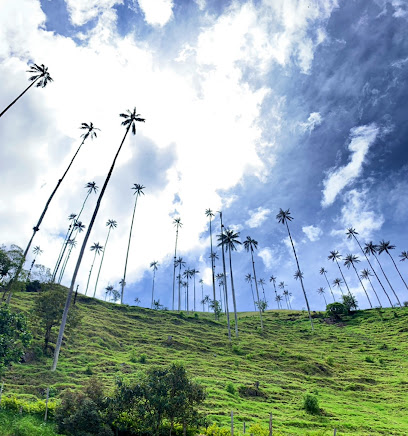
Plaza de Bolívar Salento
Discover the vibrant culture and beauty of Salento at Plaza de Bolívar, the heart of the town surrounded by lush greenery and colorful architecture.
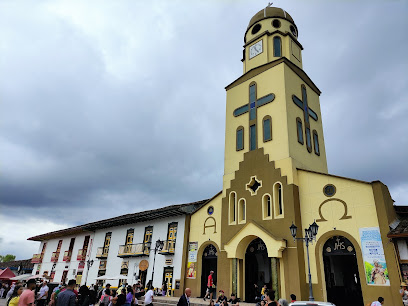
Cocora Valley Trail
Discover the breathtaking beauty of Cocora Valley Trail, where towering wax palms meet stunning mountain scenery in Colombia's Coffee Region.
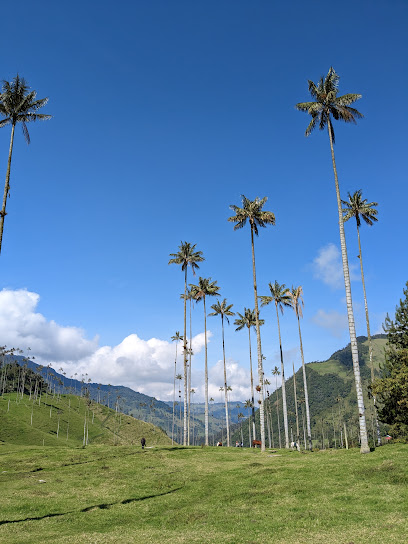
Finca El Ocaso Salento
Explore the heart of Colombia's coffee culture at Finca El Ocaso Salento, a serene escape with breathtaking views and authentic experiences.
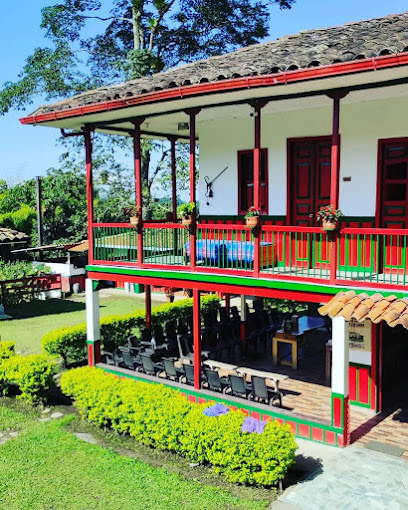
Calle Real
Experience the vibrant culture and artisan charm of Calle Real, the heart of Salento, where every step unveils a piece of Colombian heritage.
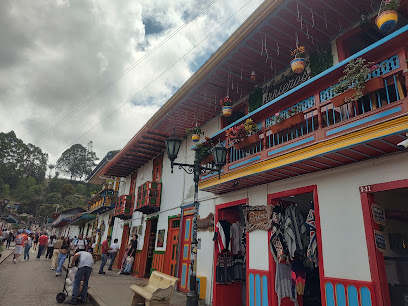
Donde Juan B Bosques de Cocora Valle De cocora
Explore the best of Colombian cuisine at Donde Juan B in Valle del Cocora, where breathtaking nature meets culinary excellence.
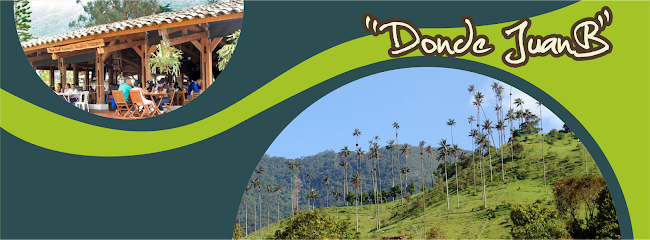
Coffee Tree Boutique Hostel
Discover the charm of Salento at Coffee Tree Boutique Hostel, where comfort meets local culture amidst stunning natural beauty.
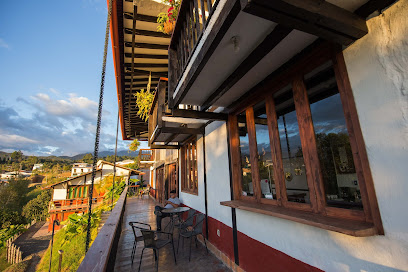
Reserva Natural Acaime
Explore the breathtaking beauty and rich biodiversity of Acaime Nature Reserve in Salento, Quindio – a perfect getaway for nature lovers.
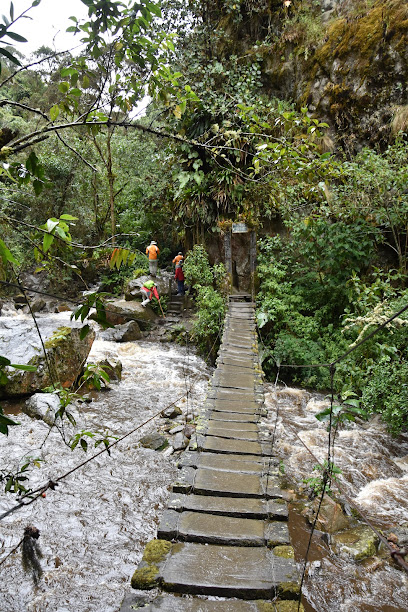
Montana Glamping
Discover the enchanting Montana Glamping in Salento, Quindío, where luxury meets nature in a breathtaking setting.
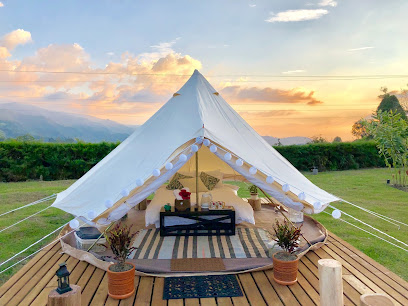
Cocora Waterfalls
Discover the breathtaking Cocora Waterfalls, a serene nature preserve in Colombia's Quindío region, perfect for hiking and photography.
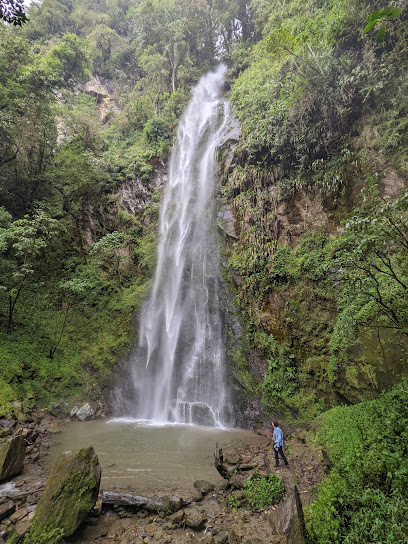
Cascadas de cocora
Explore the breathtaking beauty of Cascadas de Cocora, a nature preserve filled with stunning waterfalls, unique wildlife, and iconic wax palm trees.
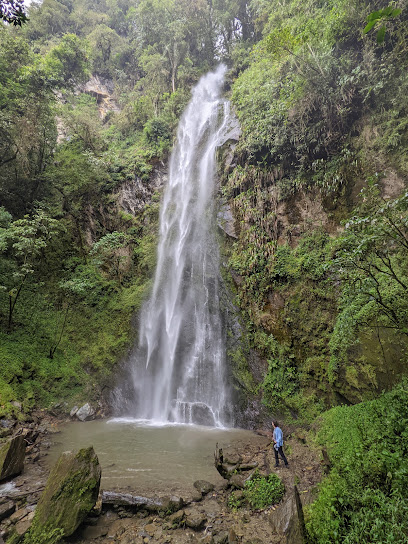
Essential bars & hidden hideouts
Cocora Valley Trail
Discover the stunning beauty of Cocora Valley Trail, a premier hiking destination in Salento, Colombia, famous for its iconic wax palms and breathtaking views.
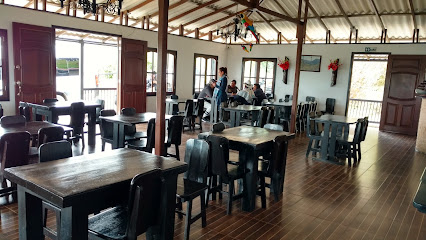
Quindu Restaurante
Experience the vibrant flavors of Colombia at Quindu Restaurante in Salento, where local ingredients meet exceptional hospitality in a charming setting.
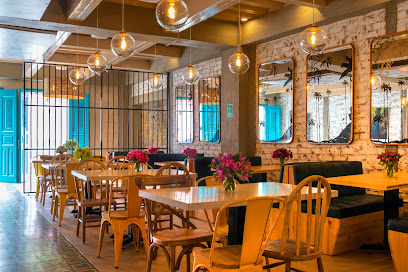
Donde Juan B Bosques de Cocora Valle De cocora
Experience authentic Colombian cuisine surrounded by the breathtaking landscapes of Valle de Cocora at Donde Juan B.
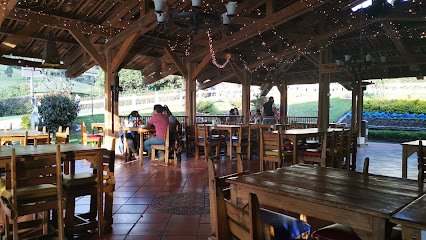
Cancha De Tejo Los Amigos
Discover the excitement of tejo in Salento at Cancha De Tejo Los Amigos, where fun and tradition come together in a vibrant atmosphere.
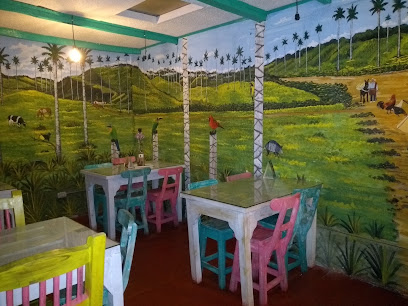
Cocora's
Discover the authentic tastes of Salento at Cocora's, where local flavors meet friendly service in a charming atmosphere.
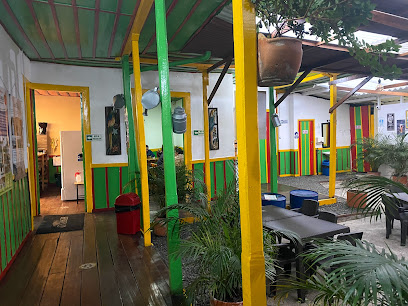
Eco Hotel Restaurant The Palms of Cocora
Discover the flavors of Colombia in a stunning setting at Eco Hotel Restaurant The Palms of Cocora, where nature and gastronomy meet.
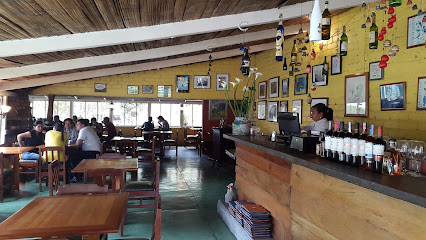
Cascadas de cocora
Explore the breathtaking beauty of Cascadas de Cocora, a stunning nature preserve famous for its waterfalls and diverse ecosystems in Colombia's coffee region.
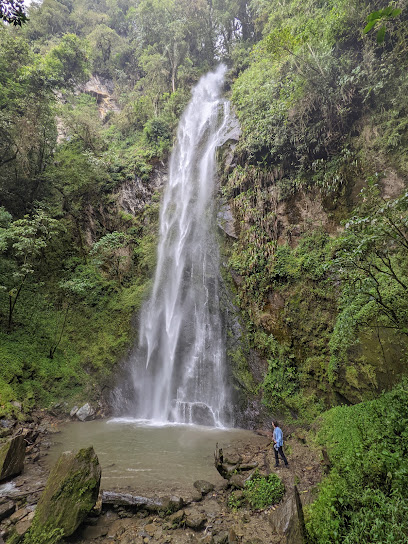
Bar Danubio
Discover the vibrant atmosphere of Bar Danubio in Salento, a top destination for pool enthusiasts and socializers in Colombia's coffee region.
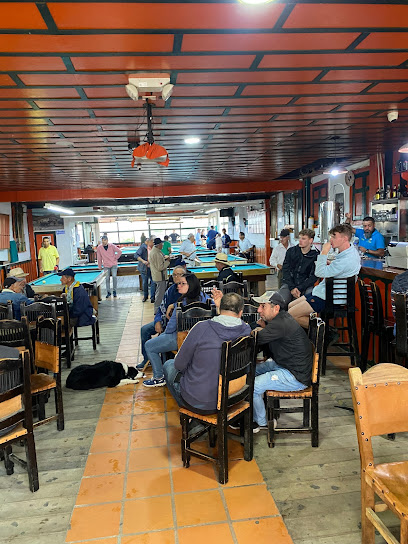
TRUCHAS COCORA
Experience authentic Colombian cuisine at Truchas Cocora in Salento, where fresh flavors and local traditions come together in a delightful dining experience.
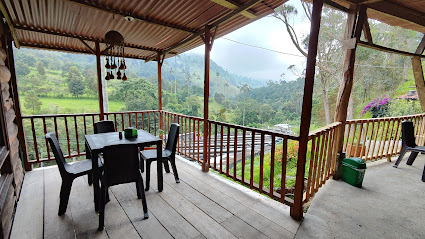
Restaurante Aires De Cocora
Experience authentic Colombian cuisine at Restaurante Aires De Cocora, surrounded by the breathtaking beauty of Valle del Cocora in Salento, Quindío.
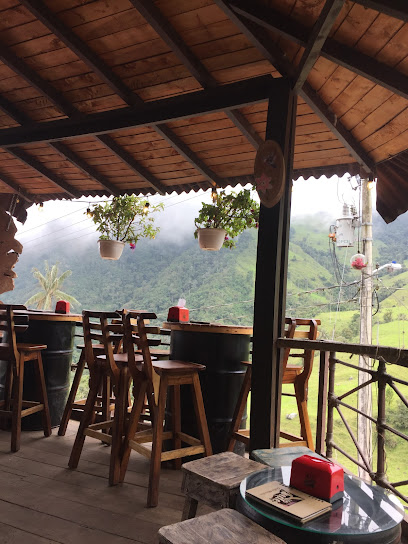
Restaurante Donde Kike Cocora
Discover local flavors amidst the stunning landscapes of Valle del Cocora at Restaurante Donde Kike Cocora.
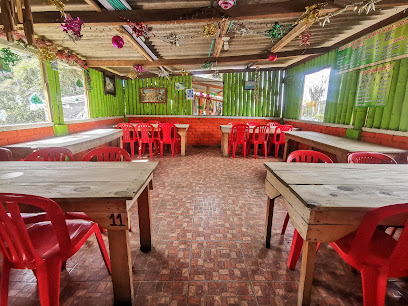
Restaurante Valle Del Cocora
Experience authentic Colombian flavors at Restaurante Valle Del Cocora in Salento, where breathtaking views meet delightful cuisine.
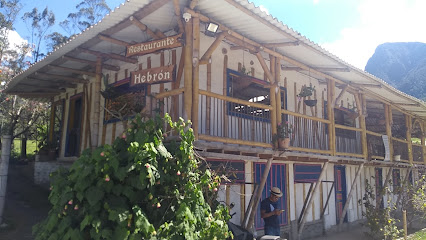
Restaurante Juan B Jaramillo
Savor the authentic flavors of Colombia at Restaurante Juan B Jaramillo in Salento, a must-visit dining experience amidst stunning natural beauty.
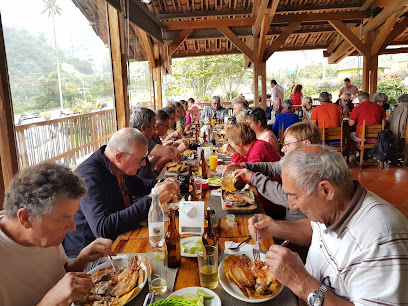
Casa Willys Campestre
Discover the vibrant flavors of Colombian cuisine at Casa Willys Campestre, a must-visit restaurant in the heart of Salento, Quindío.
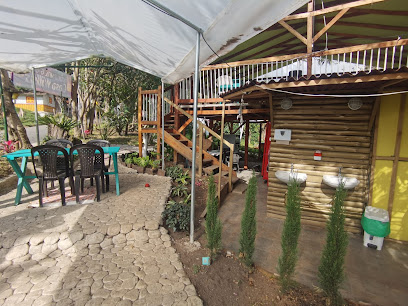
Restaurante de Orillos
Experience the authentic flavors of Colombia at Restaurante de Orillos in Salento, where culinary tradition meets breathtaking views.
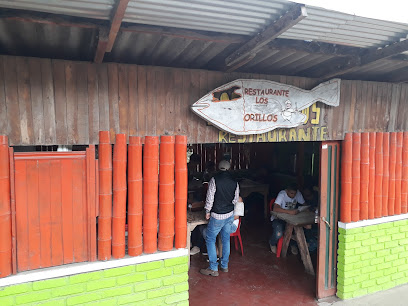
Local Phrases about Cocora Valley
-
- HelloHola
[o-la] - GoodbyeAdiós
[a-di-os] - YesSí
[see] - NoNo
[no] - Please/You're welcomePor favor
[por fa-vor] - Thank youGracias
[gra-sias] - Excuse me/SorryPerdón
[per-don] - How are you?¿Cómo estás?
[ko-mo es-tas] - Fine. And you?Bien. ¿Y tú?
[bien. ee too] - Do you speak English?¿Hablas inglés?
[a-blas in-gles] - I don't understandNo entiendo
[no en-tien-do]
- HelloHola
-
- I'd like to see the menu, pleaseMe gustaría ver el menú, por favor
[me gus-ta-ria ver el me-nu, por fa-vor] - I don't eat meatNo como carne
[no ko-mo kar-ne] - Cheers!¡Salud!
[sa-lud] - I would like to pay, pleaseMe gustaría pagar, por favor
[me gus-ta-ria pa-gar, por fa-vor]
- I'd like to see the menu, pleaseMe gustaría ver el menú, por favor
-
- Help!¡Ayuda!
[a-yu-da] - Go away!¡Vete!
[ve-te] - Call the Police!¡Llama a la policía!
[ya-ma a la po-li-sia] - Call a doctor!¡Llama a un doctor!
[ya-ma a un dok-tor] - I'm lostEstoy perdido
[es-toy per-di-do] - I'm illEstoy enfermo
[es-toy en-fer-mo]
- Help!¡Ayuda!
-
- I'd like to buy...Me gustaría comprar...
[me gus-ta-ria kom-prar] - I'm just lookingSólo estoy mirando
[so-lo es-toy mi-ran-do] - How much is it?¿Cuánto cuesta?
[kwan-to kues-ta] - That's too expensiveEso es demasiado caro
[e-so es de-ma-sia-do ka-ro] - Can you lower the price?¿Puede bajar el precio?
[pwe-de ba-har el pre-sio]
- I'd like to buy...Me gustaría comprar...
-
- What time is it?¿Qué hora es?
[ke o-ra es] - It's one o'clockEs la una
[es la u-na] - Half past (10)Las diez y media
[las dy-es ee me-dya] - MorningMañana
[ma-nya-na] - AfternoonTarde
[tar-de] - EveningNoche
[no-che] - YesterdayAyer
[a-yer] - TodayHoy
[hoi] - TomorrowMañana
[ma-nya-na] - 1Uno
[u-no] - 2Dos
[dos] - 3Tres
[tres] - 4Cuatro
[kwa-tro] - 5Cinco
[sinko] - 6Seis
[sais] - 7Siete
[syet-e] - 8Ocho
[o-cho] - 9Nueve
[nwe-ve] - 10Diez
[dy-es]
- What time is it?¿Qué hora es?
-
- Where's a/the...?¿Dónde está...?
[don-de es-ta] - What's the address?¿Cuál es la dirección?
[kwal es la di-rek-sion] - Can you show me (on the map)?¿Puedes mostrarme (en el mapa)?
[pwe-des mos-trar-me (en el ma-pa)] - When's the next (bus)?¿Cuándo es el próximo (autobús)?
[kwan-do es el pro-si-mo (au-to-bus)] - A ticket (to ....)Un boleto (a ...)
[un bo-le-to (a)]
- Where's a/the...?¿Dónde está...?
History of Cocora Valley
-
Long before the arrival of Spanish conquistadors, the Cocora Valley was home to the Quimbaya people, an indigenous civilization known for their advanced metallurgy and intricate gold artifacts. The Quimbaya thrived in the region, developing sophisticated agricultural practices and trade networks. Their legacy is reflected in the archaeological sites and artifacts found in the valley.
-
In the 16th century, Spanish explorers arrived in the region, drawn by tales of El Dorado and the wealth of indigenous civilizations. The Cocora Valley came under Spanish control, leading to significant cultural and demographic changes. The introduction of European agriculture and livestock transformed the landscape and the way of life for the inhabitants.
-
Founded in 1842, the town of Salento became a gateway to the Cocora Valley. Originally a settlement for freed slaves and later a hub for coffee cultivation, Salento played a crucial role in the region's development. The town's colonial architecture and cultural heritage are a testament to its historical significance.
-
The Quindío wax palm (Ceroxylon quindiuense), Colombia's national tree, is native to the Cocora Valley. Over the years, deforestation and land use changes threatened this iconic species. Conservation efforts in the late 20th century aimed to protect the wax palm and its unique ecosystem, leading to the establishment of protected areas and sustainable tourism practices.
-
The Cocora Valley is part of Colombia's Coffee Axis, a UNESCO World Heritage Site recognized for its unique coffee-growing culture. The region's fertile soil and favorable climate have made it a prime area for coffee cultivation. The valley's coffee farms and traditional methods of coffee production offer visitors a glimpse into the rich heritage of Colombian coffee culture.
-
In recent decades, the Cocora Valley has become a popular destination for tourists seeking natural beauty and outdoor adventures. The development of ecotourism has brought economic benefits to the region while promoting environmental conservation. Hiking trails, birdwatching tours, and cultural experiences attract visitors from around the world, contributing to the valley's vibrant tourism industry.
Cocora Valley Essentials
-
Cocora Valley is located in the Quindío Department of Colombia. The nearest major city is Armenia, which has the El Edén International Airport (AXM). From Armenia, you can take a taxi or bus to the town of Salento, which is the gateway to Cocora Valley. The journey from Armenia to Salento takes approximately 45 minutes by road. Alternatively, you can reach Armenia by bus from Bogotá or Medellín, with travel times of approximately 7-8 hours and 6-7 hours respectively.
-
Once in Salento, the most popular way to reach Cocora Valley is by taking a traditional Willy Jeep from the town square. These jeeps depart regularly and the ride to the valley takes about 20-30 minutes. For those who prefer a more private option, taxis are also available. Within the valley, hiking is the best way to explore the scenic trails and viewpoints.
-
The official currency in Colombia is the Colombian Peso (COP). Credit cards are accepted in many establishments in Salento, but it is advisable to carry cash, especially for small purchases and in rural areas like Cocora Valley. ATMs are available in Salento, so it is easy to withdraw cash if needed.
-
Cocora Valley and Salento are generally safe for tourists. However, it is always wise to take standard precautions such as not leaving belongings unattended and avoiding walking alone at night in isolated areas. While incidents targeting tourists are rare, it's best to stay vigilant and aware of your surroundings at all times.
-
In case of emergency, dial 123 for immediate assistance. The nearest medical facilities are located in Salento and Armenia, where you can find hospitals and clinics. It is recommended to have travel insurance that covers medical emergencies. Pharmacies in Salento can provide over-the-counter medications for minor health issues.
-
Fashion: Do wear comfortable hiking shoes and weather-appropriate clothing. Avoid wearing flashy jewelry. Religion: Do respect local religious customs and traditions when visiting churches. Public Transport: Do be courteous and respectful when using shared transport options like Willy Jeeps. Don’t expect strict adherence to schedules; timings can be flexible. Greetings: Do greet locals with a friendly 'Hola' and a smile. Handshakes are common. Eating & Drinking: Do try local dishes like 'trucha' (trout) and 'patacones.' Don’t refuse food offerings as it may be considered impolite.
-
To experience Cocora Valley like a local, visit Salento’s colorful main square and its artisanal shops. Engage with local coffee farmers and take a coffee tour to understand the region’s famous coffee culture. Don’t miss hiking the 'Valle de Cocora' trail to see the iconic wax palms, Colombia’s national tree. For a unique dining experience, try the local food stalls and family-run restaurants in Salento.
Trending Landmarks in Cocora Valley
-
Parque Nacional Natural Tayrona
-
Valle de Cocora
-
Salento viewpoint
-
Forest of the Palms
-
Los Nevados National Park
-
Plaza de Bolívar Salento
-
Cocora Valley Trail
-
Parque Nacional Natural Serranía de La Macarena
-
Calle Real
-
Viajero Hostel Salento
-
El Mirador del Cocora
-
Coffee Tour Luger
-
Finca De Don Elias
-
Alto de la Cruz viewpoint
-
Donde Juan B Bosques de Cocora Valle De cocora
Nearby Cities to Cocora Valley
-
Things To Do in Pereira
-
Things To Do in Ibagué
-
Things To Do in Manizales
-
Things To Do in Bogotá
-
Things To Do in Cali
-
Things To Do in Medellín
-
Things To Do in Neiva
-
Things To Do in Villavicencio
-
Things To Do in Tunja
-
Things To Do in Popayán
-
Things To Do in Pasto
-
Things To Do in Cúcuta
-
Things To Do in Sincelejo
-
Things To Do in Ibarra
-
Things To Do in Otavalo


